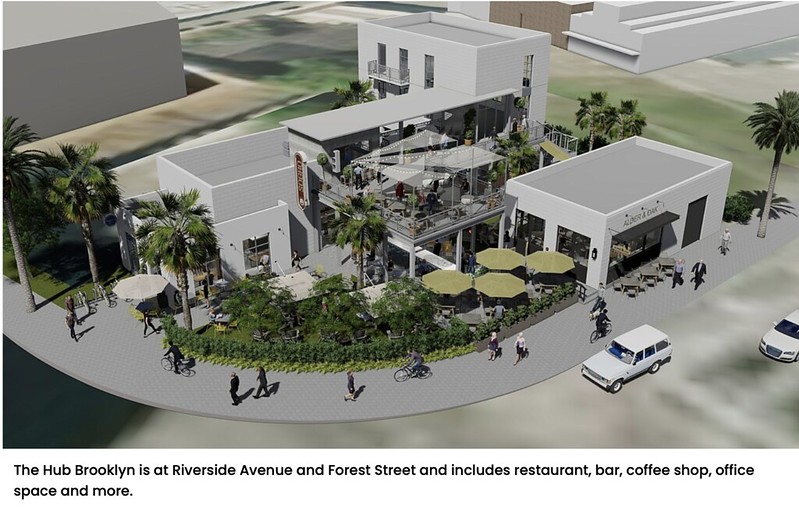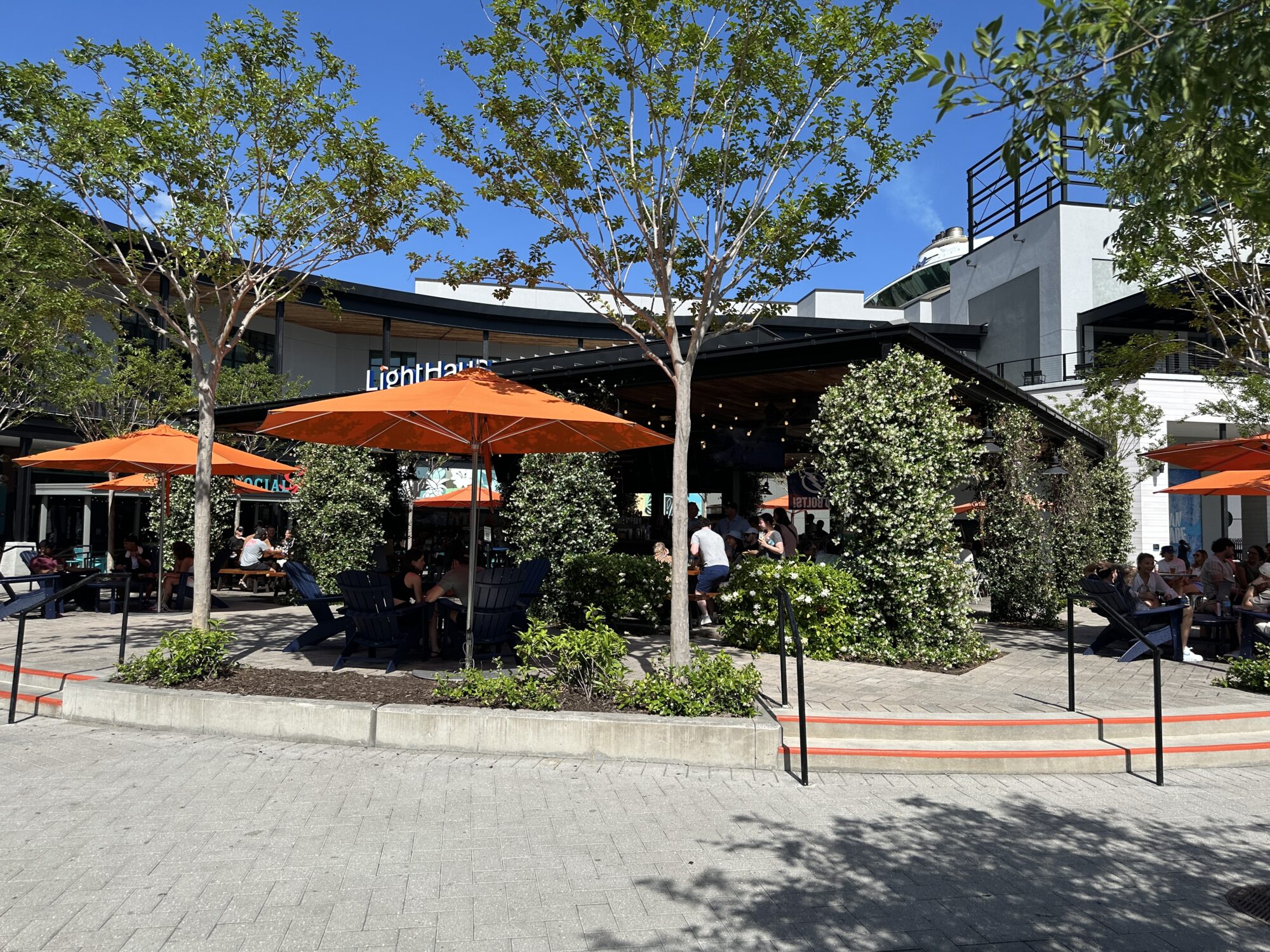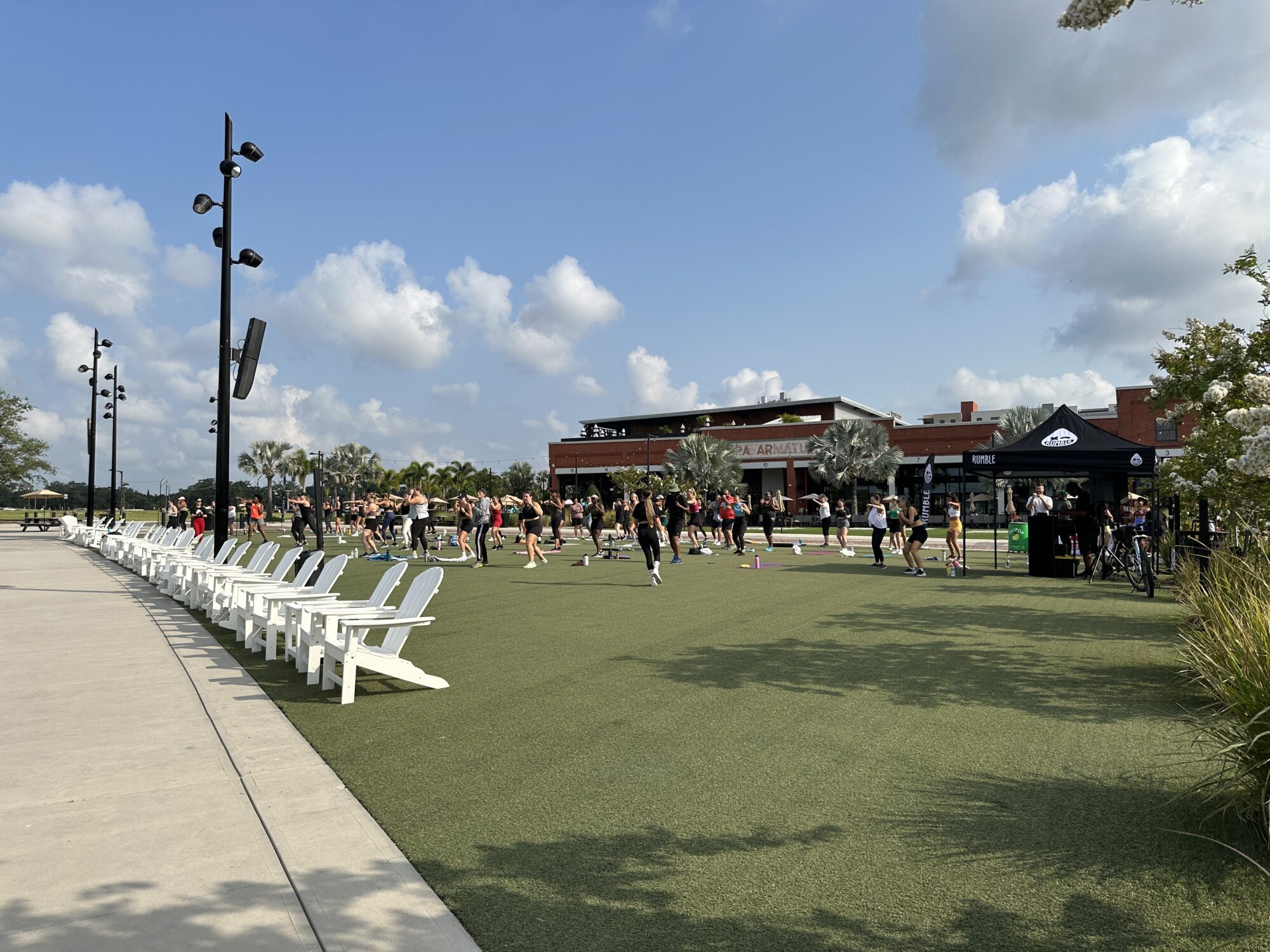May 27, 2025
The following letter was sent to Jacksonville City Council Members in advance of deliberations over the land swap versus purchase option on 801 W. Bay Street for the UF Campus. The swap would award land at Riverfront Plaza to Gateway Jax for development of a high rise hotel and luxury condominiums.
To: Members of the Jacksonville City Council
Riverfront Parks Now is excited about UF’s downtown campus and has followed the related discussion involving the former Landing site with great interest. Initially hesitant to enter this complex conversation, we’ve recently been encouraged to share our perspective in keeping with our role as a civic advocacy group. We support the City’s direct purchase of the Interline Building because doing so preserves flexibility and allows for consideration of an additional option for the northeast corner of the Landing site. So far, discussion about this parcel has centered on two options—a grass lawn or a high-rise—neither of which seem to resonate with most residents. We propose a third option: one that could activate the park more quickly, cost less, and offer lasting value to the community.
Give People What They Want—Activation for LESS. With nearby parcels readily available for high-rise development, we encourage the City to consider instead a well-designed, low-rise development comprised of a multi-level restaurant and retail hub on the northeast corner of the Landing/Riverfront Plaza. Tampa’s riverfront offers a proven model, with places like the two-story Armature Works and one to three-story Sparkman Wharf (see photos below) that draw people in and energize the area. These vibrant spaces thrive without towers—offering public benefits without costly city-funded financial incentives.
We recommend consideration of a similar low-rise approach for the Landing’s northeast corner, drawing inspiration not just from Tampa but also from the HUB development currently underway in Brooklyn (photo below). This type of structure could allow the City to retain long-term control and ownership of the land while providing leased space for restaurants and rooftop dining that integrate seamlessly into the park.
Faster, More Cost Effective, and a Better Fit. A low-rise is not only more affordable but it can be delivered faster if the City acts decisively. This approach reflects the strong public interest in food and drink amenities while enhancing and preserving the park’s character—and it could save the City tens of millions by avoiding costly incentives, completion grants, and the complex and costly underground utility relocation required for a high-rise. The low-rise option is a better fit for park use—its scale complements the setting, and it requires less onsite parking, which is often challenging to integrate into a walkable, pedestrian-friendly space.
Low-rise Can also Generate Tax Revenue and Support Park Maintenance. While we often justify high-rise development by their future tax and park maintenance contributions, it’s important to recognize that these developments require substantial City incentives, and the public waits decades for a positive return on those investments. In contrast, a thoughtfully designed and well-managed park paired with a low-rise mixed-use building would increase nearby property values sooner, generating new tax revenue more quickly. Additionally, businesses within the low-rise can also contribute to park upkeep—without the high upfront public cost tied to high-rise development.
In short, this third option warrants consideration before the northeast corner is swapped away. We are excited about Gateway’s other downtown projects, particularly Pearl Street. In fact, we’d welcome their leadership in shaping a low-rise at the Landing, given their familiarity with Tampa. We simply encourage the exploration of an alternate site—such as Ford on Bay—for the high-rise concept Gateway has proposed. Riverfront Parks Now respectfully recommends the City retain ownership of the back corner of the Landing and lease it to partners who will help create a vibrant, welcoming park in the heart of downtown—delivering the energy of a whole park as soon as possible. We urge you to consider this appealing less costly, faster, more park-forward alternative!
Submitted by the Riverfront Parks Now Steering Committee:
Natalie Rosenberg, chair; Susan Caven, Barbara Ketchum, Michael Kirwan, Jimmy Orth, Ted Pappas, Nancy Powell



